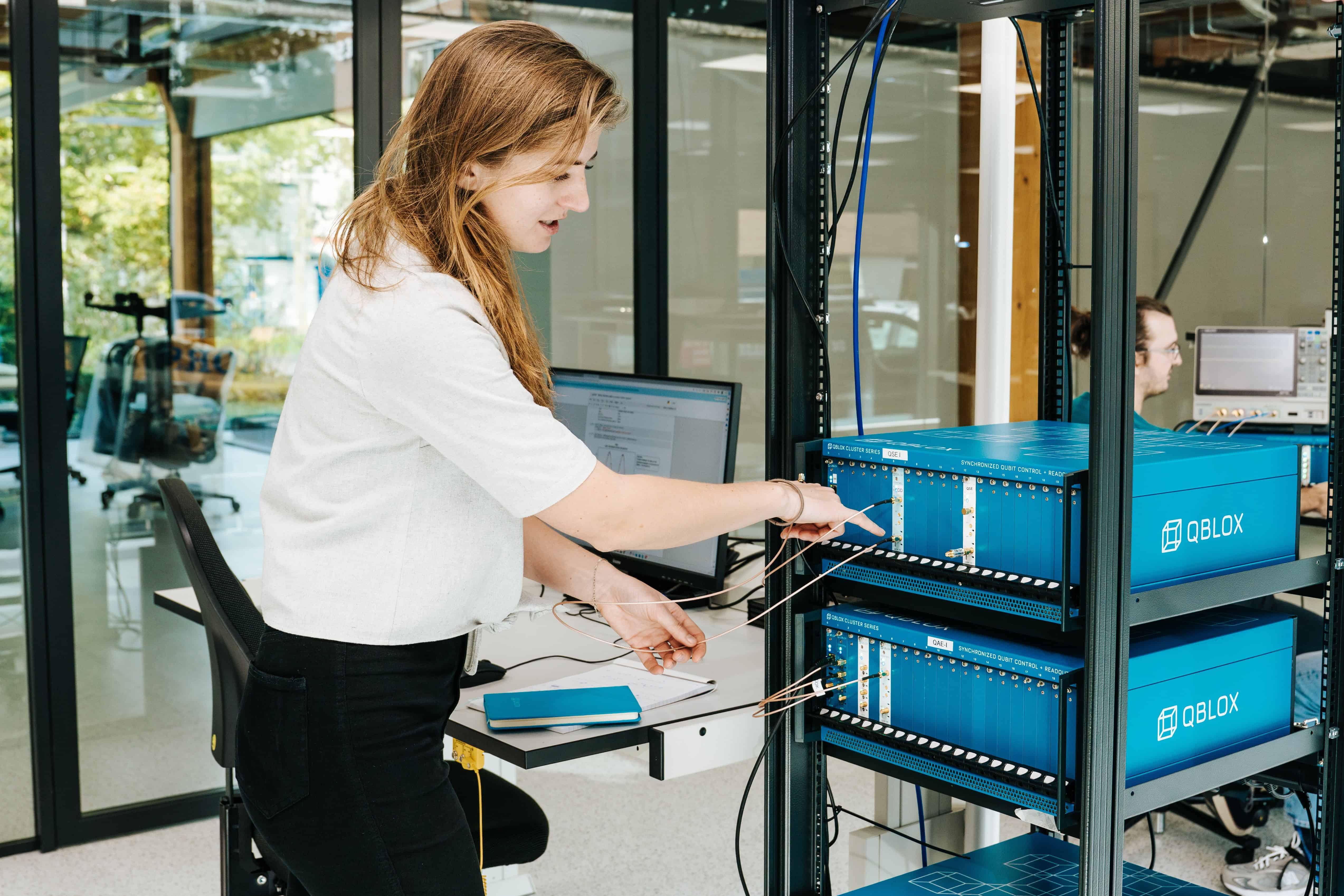
The quantum technology designed by the researchers at the University of Copenhagen (Denmark) has developed to such an extent that conventional computer technology can no longer keep up. They have developed a chip that can be scaled up and used to build the quantum simulator of the future.
New technologies present opportunities as well as new threats. One of the threats lies in the ability to break open encrypted data due to its immense computing power. As such, all data encrypted with mathematical equations is vulnerable to exposure to QCs.
The researchers developed a nanochip that is less than one-tenth the thickness of a human hair. The chip allows them to produce enough stable light particles, also called photons, that can be encoded with quantum information to scale up the technology. Apart from the University of Copenhagen, several other companies are working on prototypes of the quantum computer (QC). Amongst them Google, Intel and IBM. For a clear explanation of how a quantum computer works, see our Explainer.
Bitcoin hacking
This includes bank data, state-protected intelligence data and encrypted messages on cell phones. And especially encrypted cryptocurrency data – such as private wallet keys – are also vulnerable to QC technology. In other words, a QC can potentially be used to trace any private key on a blockchain network which makes users of that network susceptible to hacking and theft. However, the threat posed by QCs has more to do with the vulnerabilities of personal cryptocurrency accounts or portfolios. These powerful computers can hack user codes that are used to authorize transactions. Cryptocurrencies will have to evolve and use different encryption and hashing methods that are quantum-resistant.
Better batteries and fuel cells
According to McKinsey, one-tenth of all potential QC use cases being examined could benefit the automotive industry. Automotive technology is becoming one of the essential applications for QCs. BMW, Daimler and Volkswagen have stated they are committed to pursuing QC research. This includes quantum simulation for materials science, with the aim of improving the production, safety and sustainability of batteries and fuel cells.
Traffic optimization systems
A year ago in Lisbon (Portugal) Volkswagen carried out the world’s first pilot project for traffic optimization on a quantum computer. MAN buses operated by the public transport company CARRIS were equipped with a proprietary system they had developed themselves. This system used a QC prototype and calculated the fastest individual routes for each of the participating buses almost in real time. This made it possible to track down and avoid traffic jams. Volkswagen plans to develop its traffic optimization system to market maturity in the near future. It believes that this kind of system can be offered to public transport companies, cab companies and fleet managers.
Vehicle design
QCs will also be used by automobile manufacturers during the design of vehicles to make improvements when it comes to minimizing aerodynamic drag and improving environmental friendliness. Simulations of complex molecules can be performed. For example, to find new materials to develop better batteries. What’s more, training of advanced machine learning models can be done efficiently on a QC. They can perform advanced simulations such as car accidents, as well as train algorithms that are used to improve autonomous mobility software. More intelligent navigation systems could prevent traffic jams by assigning allocated routes to millions of users (see example Volkswagen). The ability of QCs to reduce computational time from half a month to a few moments implies that vehicle-to-vehicle communication is safeguarded in real time, time and again.
In summary
Quantum computers can therefore transform the world and unleash the same revolution as the personal computer and the Internet did. The path the computer has taken from meter-high beasts to the desktop computer is not something the quantum computer will be able to do for a while. Qubits need to be cooled to close to absolute zero (-273 degrees Celsius). This is essential in order to obtain the quantum mechanical properties. This is somewhat difficult to achieve in your average-sized living room..
About this column
In a weekly column, written alternately by Wendy van Ierschot, Eveline van Zeeland, Eugene Franken, Jan Wouters, Katleen Gabriels, Mary Fiers and Hans Helsloot, Innovation Origins tries to figure out what the future will look like. These columnists, occasionally joined by guest bloggers, are all working in their own way on solutions to the problems of our time. So that tomorrow is good. Here are all the previous articles.







